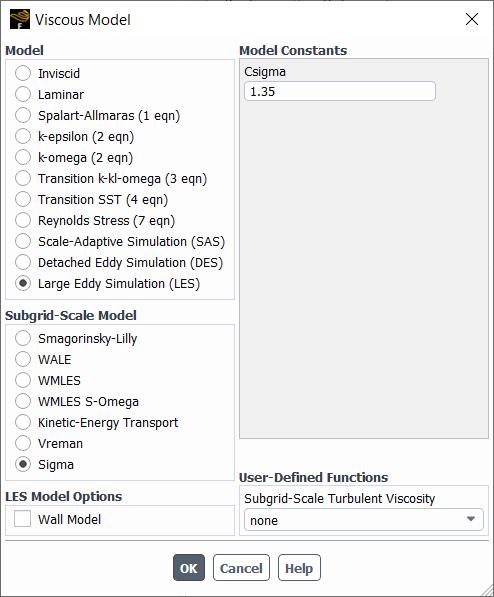In the Sigma model [11], the eddy viscosity is modeled by:
(10–13) |
where
(10–14) |
are the singular values of the velocity gradient tensor
.
To compute , a self-contained and efficient procedure is used (see Method B in the appendix
of [11]).
The grid-scale is computed as
, where V is a volume of the computational cell, and the default value of model
constant
is 1.35.
The Sigma model ensures zero eddy-viscosity in two-dimensional and two-component flows,
including pure shear and solid rotation cases. Additionally, the model is designed to return the
correct wall asymptotic () behavior for wall bounded flows.
The Sigma model is available after enabling beta feature access, as described in Introduction.
The Sigma model option is available under Subgrid-Scale Model, as
shown in Figure 10.7: The Viscous Model Dialog Box with Sigma Model Enabled after selecting Large Eddy Simulation
(LES). Under Model Constants, you are able to modify the value
for .
You can also enable the model using the TUI command:
define/models/viscous/les-subgrid-sigma?
The model constant can be specified using the TUI command:
define/models/viscous/les-model-options/csigma



